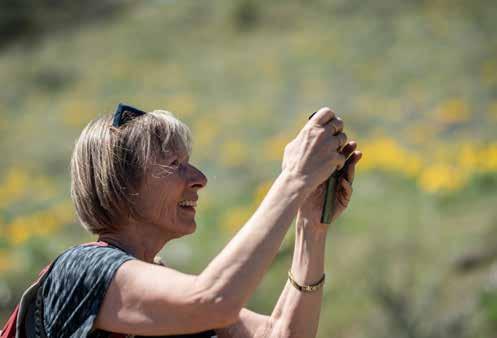
4 minute read
and those who walk
STORY BY JAANA HATTON PHOTOS BY LUKE HOLLISTER
Avid walker Beth Crane stops to take a photo of lupins and arrowleaf balsamroot blooming in the Horse Lake Reserve area in mid-April.
Advertisement
Walk, don’t run


Crane takes in the view after reaching the top of a hill in the Horse Lake Reserve area. She uses walking poles on downhill slopes to ease pressure on the joints.
Running isn’t for everyone, but walking is a perfect activity for any of us. The human body is designed for walking.
Running puts considerable strain on the joints and requires good balance. Walking, on the other hand, is much gentler and does not pound on the bone connections. With its slower pace, walking allows more time to maintain a balanced stride than running.
Dr. Edward Farrar, an orthopedic surgery specialist for Confluence Health, recommends walking as a way to improve every aspect of our health.
“Walking is good for your muscles as well as mental health,” he said. “Due to the increased blood flow to the brain, even memory and cognitive thinking are better. Walking also improves a person’s mood to the point of being helpful in treating anxiety and depression.”
Walking outdoors, Farrar said, is better than walking indoors.
“In Japan, you can get a prescription for forest bathing,” he said. “They have created parks for that purpose in Tokyo.”
Forest bathing does not require a swimsuit but a pair of walking shoes, as it simply means strolling in a wooded area. Studies have shown that trees release beneficial chemicals called phytoncides, as well as negative ions which boost our mental state.
Besides being a mood enhancer, walking can also be an adventure. It is certainly so to Beth Crane, 67, a former figure skater. She enjoys long walks and hikes.
“When I go hiking, I like to look at the flora and fauna along the way, make discoveries,” Crane said. “It’s also a good way to socialize. It’s easier to talk when you’re walking, rather than running.”

Beth Crane, left, takes a break with her hiking friend Louise Rasmussem during a mid-April outing to the Horse Lake Reserve area.
Wildflowers pop up along the Horse Lake Reserve trail system in mid-April.

Crane, who has had knee surgery, uses walking poles on downhill slopes to take the pressure off the joints.
“Walking is aerobic, weight-bearing and balance-improving,” she said.
Her longer walks have taken her on explorations around the globe, including Thailand, China, England, Italy and Bhutan.
Closer to home, Crane said she enjoys the daily 25-minute walk to the mailbox and feeding apples to the neighbor’s horse on the way back.
Craig Eaton, 68, has a more serious attitude toward walking. He likes to keep track of his pace and distance with a phone app.
Besides his sometimes 50-mile bike rides, Eaton walks four to five times a week.
“I used to run, 20 years ago, but I had constant aches and pains from it so I finally gave it up,” he said. “The spine does this odd undulating motion when we run. I had pain in my neck, knees and spine. Walking doesn’t cause any of that.”
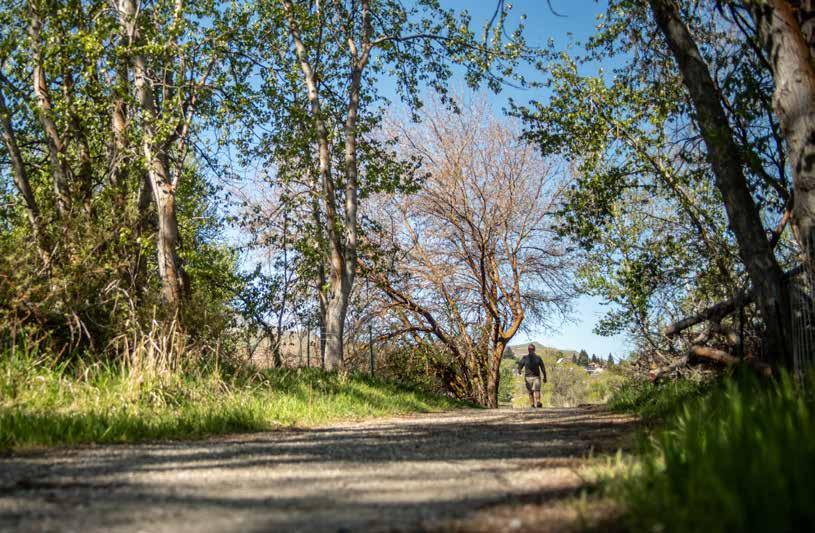
A former runner, Craig Eaton now walks four to five times a week. He’s seen here walking near Confluence State Park.
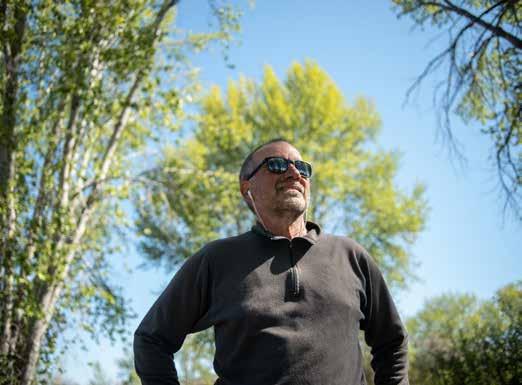
Eaton says the constant aches and pains from running made him give it up. He now bikes and walks for exercise.
Eaton said he learned about the benefits of walking in 2011 while doing research at work for Microsoft. That led him to buy a Fitbit watch to keep track of his walking progress.
“When I was living in New York, I walked everywhere — no dealing with the taxi cabs or public transportation,” he said. “I just walked to wherever I needed to go.”
With all that New York foot mileage, he could eat well and stayed well.
“I have a couple of favorite routes here in Wenatchee,” Eaton said. “Four miles is a nice distance. I listen to motivating music as I go. Overall, walking elevates my mood, rain or shine.”
Eaton believes in a good pair of walking shoes — they can make all the difference.
To get the aerobic benefit from walking, it’s important maintain a brisk pace; talking should be possible but the heart rate should be elevated. Those measurements differ from person to person.
“One of my patients had gastric bypass surgery a year ago, “Farrar said.

Craig Eaton walks along the Apple Capital Recreation Loop Trail after passing over the Wenatchee River in mid-April.
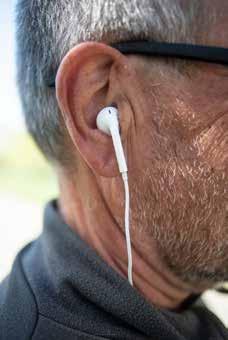
Listening to music is an important part of Eaton’s regular walks around the Wenatchee area. Eaton says it is essential for regular walkers to have a good pair of shoes.
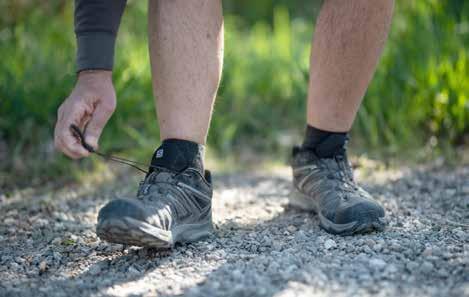
“That patient goes on a four-mile walk every day and is mindful of their diet. That has led to a weight loss of 110 pounds and no need for hypertension medication anymore.”
Farrar, who is paralyzed from the chest down due to a bicycle accident, explained that when we walk there is a constant conversation between our feet and our brain: is the surface slippery, uneven, how to place our next step?
“Walking is a miracle,” Farrar said. “We don’t realize it until we lose the ability to do so.” F




